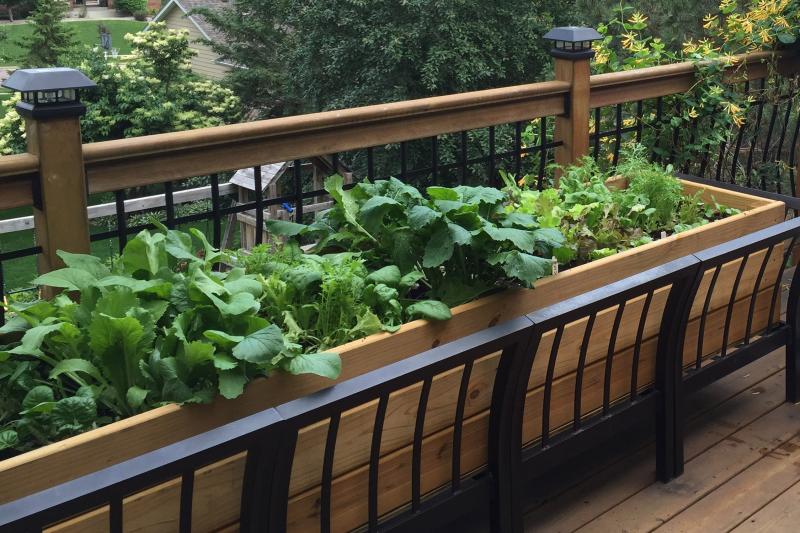
Home vegetable gardens are making a comeback. More and more people are taking the time to grow their own vegetables. This can be for a number of reasons including convenience, quality of the fresh produce, making more nutritional meals, as a hobby or just for the enjoyment of gardening. For many, gardening is something new and also something that needs to fit into the smaller, urban yards that most people now have, compared to the larger yards of our grandparents that often lived in the country.
Certainly some people are blessed with plenty of room to spread out the garden but most folks only have room for a relatively small garden or may instead rent a small vegetable garden plot from their local community garden. Others have gone to strictly gardening in small raised beds or even in containers. These can be intensively productive for the amount of space they take up, in some cases these may just sit on a balcony or patio of your apartment. If you don’t have much space it is important to get the most from what space you have available.
Row Spacing
The first thing to consider is row spacing. The “traditional” garden had fairly wide rows, usually wide enough to allow the rototiller to make it down the row without tilling out the plants. There are certainly plants that need fairly wide rows or a good space between plants because they take up a lot of room to grow. If you pack too many sweet corn plants into a small space they will probably just crowd each other out as they compete with each other for water, nutrients and most importantly, sunlight. Other plants like cabbage or cauliflower need space to allow their heads to develop. Vining plants like the cucurbits need space to vine out and get as much sun exposure to their leaves as possible and also have room for their fruit to develop. But there are many vegetable crops that can be planted much closer together, perhaps in a wide row, 12 to 18” wide or in multiple rows, 3 to 10” apart then with a wider row in between to allow access to the plants for weeding and harvest.
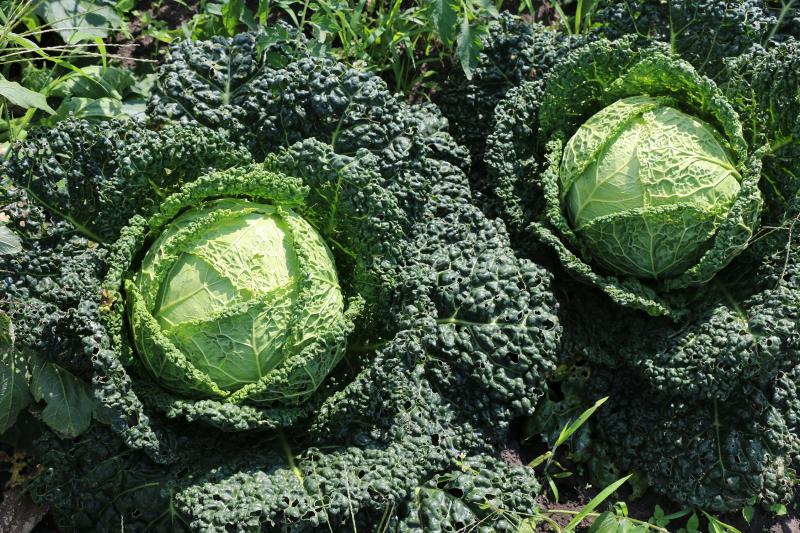
Plants for Wide Rows
Salad greens like leaf lettuce and many leafy herbs are great examples of a plants that will grow well in a wide row. You still need to keep in mind plant spacing, however, each individual plant still needs its space to grow. But the real space savings is that you don’t leave as much bare soil that could otherwise become a spot for weeds to grow in. Small root crops like radishes also work well in wide rows. Make a row about a foot wide, scatter the seed out fairly thinly, then cover with a small amount of soil. Gently firm the soil over the seed to help provide good seed to soil contact which will help improve germination. Once the seedlings come up and get their first few true leaves you may need to thin the plants to allow individual roots to develop. The leaves of the radishes you thin out can be added to your salad too – they add a nice peppery taste.
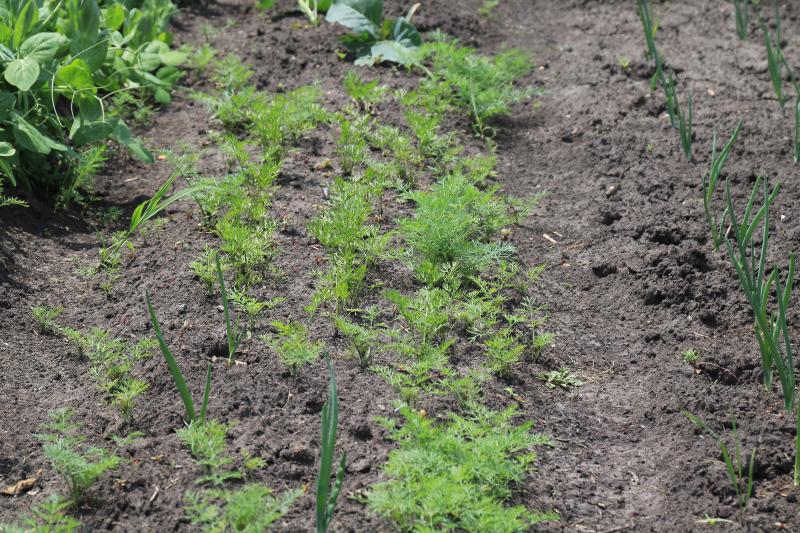
Plants for Narrow Rows
Multiple, narrow rows work well for other root crops like carrots, beets or onions. Try planting three rows, about 6 to 8” apart. Once again, sprinkle the seed thinly along the rows and cover with a thin layer of soil. In the case of the onions, plant the sets or plants about 8 to 10” apart to allow room for the bulbs to develop to their full size and the plants’ leaves to have room to get full sun exposure. Staggering the sets or plants along the three rows will also help each plant to have room to grow. The carrots and beets will likely have to be thinned too, depending on how well your seed germinated. Beet greens are good salad greens too, especially from the thinnings.
Vertical Space
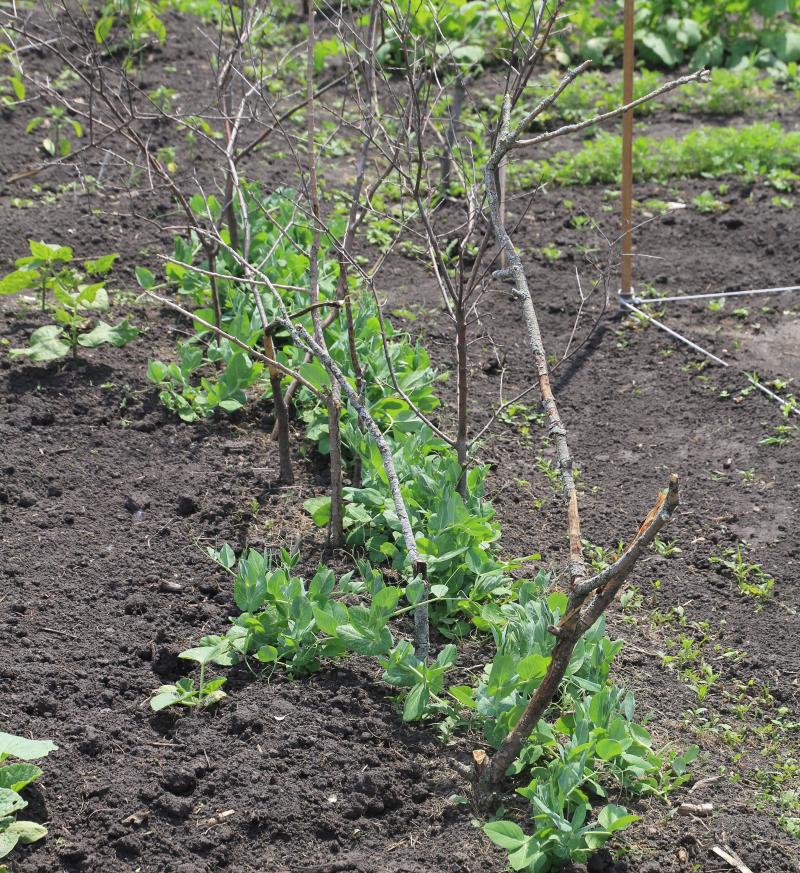
Peas & Beans
Another important way to improve the use of the limited garden square footage you might have is to go vertical. Instead of just planting your peas and letting them flop over onto the ground, take advantage of the tendrils that most pea varieties normally produce and give them something to grab onto, like some chicken wire, an old cattle panel or even some dead branches from a tree in your yard. Getting the plants to grow up and off the ground will allow for better light penetration and air infiltration to reduce the chance of diseases like powdery mildew and also make picking a lot easier.
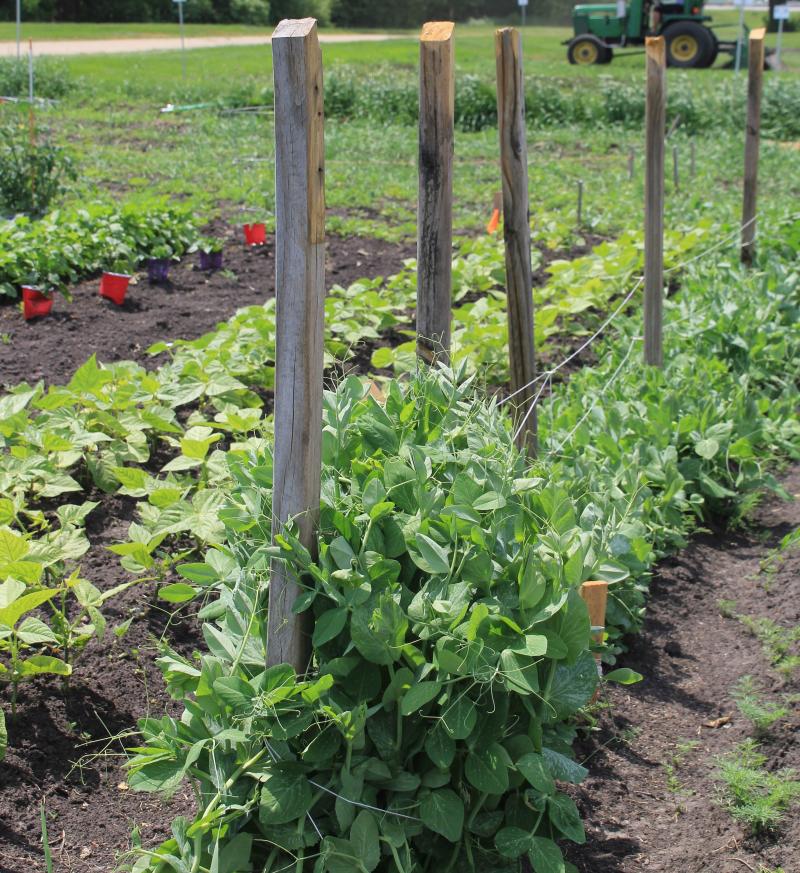
The same strategy applies to beans. You have two basic types to choose from. Bush beans which can be very productive but grow into a relatively short, bushy plant or you can grow very similar varieties that are pole types. These grow up by twining around whatever is close by, as long as it is not too big in diameter. Pole beans can easily grow 6’ tall or more, depending on the variety that you grow. Once again, pole beans can be much easier to harvest and will often be more productive than their bushy counterparts. However, it is important to remember that for snap or string beans you need to keep up with harvesting to continually induce more flowers to develop. If you are not keeping up with harvesting, fewer new pods will likely develop.
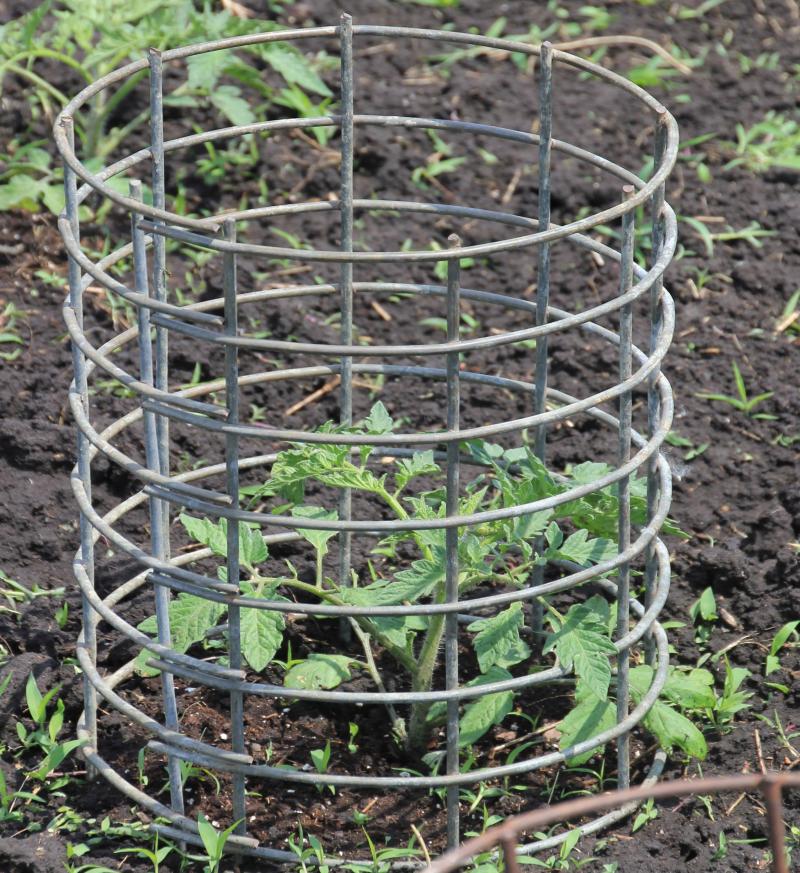
Tomatoes
Tomatoes are a favorite of most gardeners and they too can be grown using several options. Some gardeners just let the plants sprawl over the ground. This growing method can work OK but it can make harvesting difficult and plants and fruit may be more prone to disease problems as they contact the soil and air circulation around the foliage is limited. Most people opt to use tomato cages. However most of these seem to be too flimsy to really support a tomato plant that is loaded with fruit. Often an additional stake will be needed to support the plant, particularly if one is growing semi-determinate or indeterminate tomato varieties which can grow quite tall.
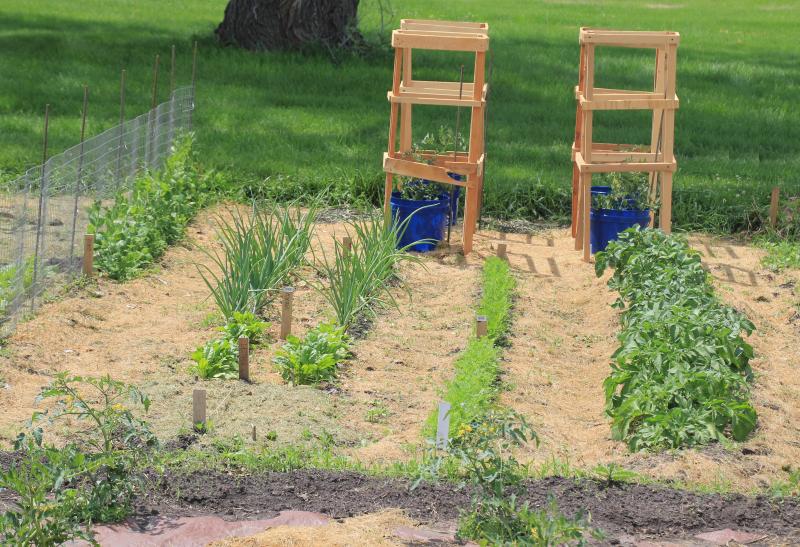
Some people will use sections of cattle panels to support their plants or make wooden structures to contain their tomatoes. All of these help the plants to stay upright, usually reduce disease problems, facilitate harvesting and take up less garden real estate. There are also tomato varieties developed for small areas, for containers, or even hanging baskets. These will often be referred to as patio type tomatoes.

Vining Crops
Trellises can also be used for some of the vining crops. Cucumbers respond well to growing on a trellis and because they do not grow too large, do not need a real heavy support system. Cattle panels work very well. You might have some of these sitting around or know of someone that might have a few that they would be willing to let you use. They can also be picked up at farm supply stores. But you can also make your own trellis out of wood and other materials. Some people will lean two panels against each other and support them with posts. As the cucumbers or other cucurbits grow up the panels, the fruit can hang down in between, making it easy to harvest. Larger fruiting cucurbits like squash or pumpkins will likely need additional support to hold up the heavier plants and even individual support for each fruit. There are also bush types of several cucurbits, most commonly of squash and a few cucumber varieties, which can be quite productive but take up a lot less space.


